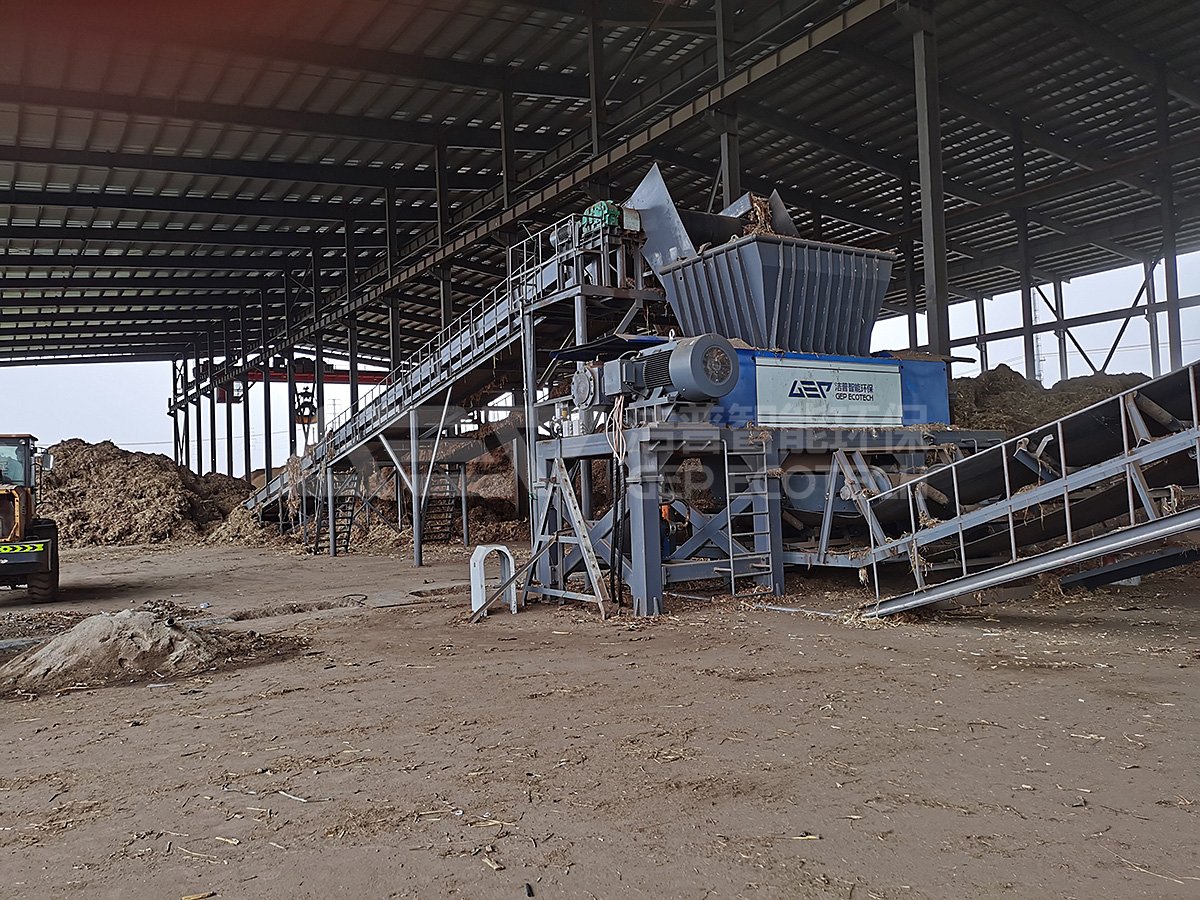The electricity consumption of a biomass crusher per hour can vary significantly based on various factors, including the machine's specifications, the type of biomass being processed, the machine's efficiency, and the specific operational conditions.

GEP biomass crushing project site
The power consumption of a biomass crusher is primarily influenced by:
- Machine Type and Specifications: Different models and sizes of biomass crushers have varying power requirements. Taking GEP ECOTECH as an example, our biomass crushers include single-shaft crushers, dual-shaft shear crushers, and four-shaft shear crushers with outputs ranging from 10 to 60 tons per hour. Larger or more powerful machines generally consume more electricity.
- Biomass Characteristics: Processing different types of biomass materials, such as wood chips, agricultural residues, or forestry waste, may have different densities, moisture contents, and hardness levels, affecting the energy consumption.
- Crushing Process and Requirements: Crushing biomass to different sizes or fineness levels may require varying amounts of energy. Finer or coarser crushing can impact power consumption.
- Machine Efficiency and Load: The efficiency of the crusher and the load it handles during operation can significantly affect electricity consumption. Higher loads or less efficient machines may consume more power.
- Without specific data on the machine's model, operational conditions, and the type of biomass being processed, providing an exact figure for electricity consumption per hour is challenging.
It's advisable to refer to the manufacturer's specifications or operational manuals for the specific power consumption details related to a particular biomass crusher under ideal conditions. Additionally, conducting an energy audit while considering the machine's workload and operational efficiency can provide more accurate information regarding its hourly electricity consumption.

